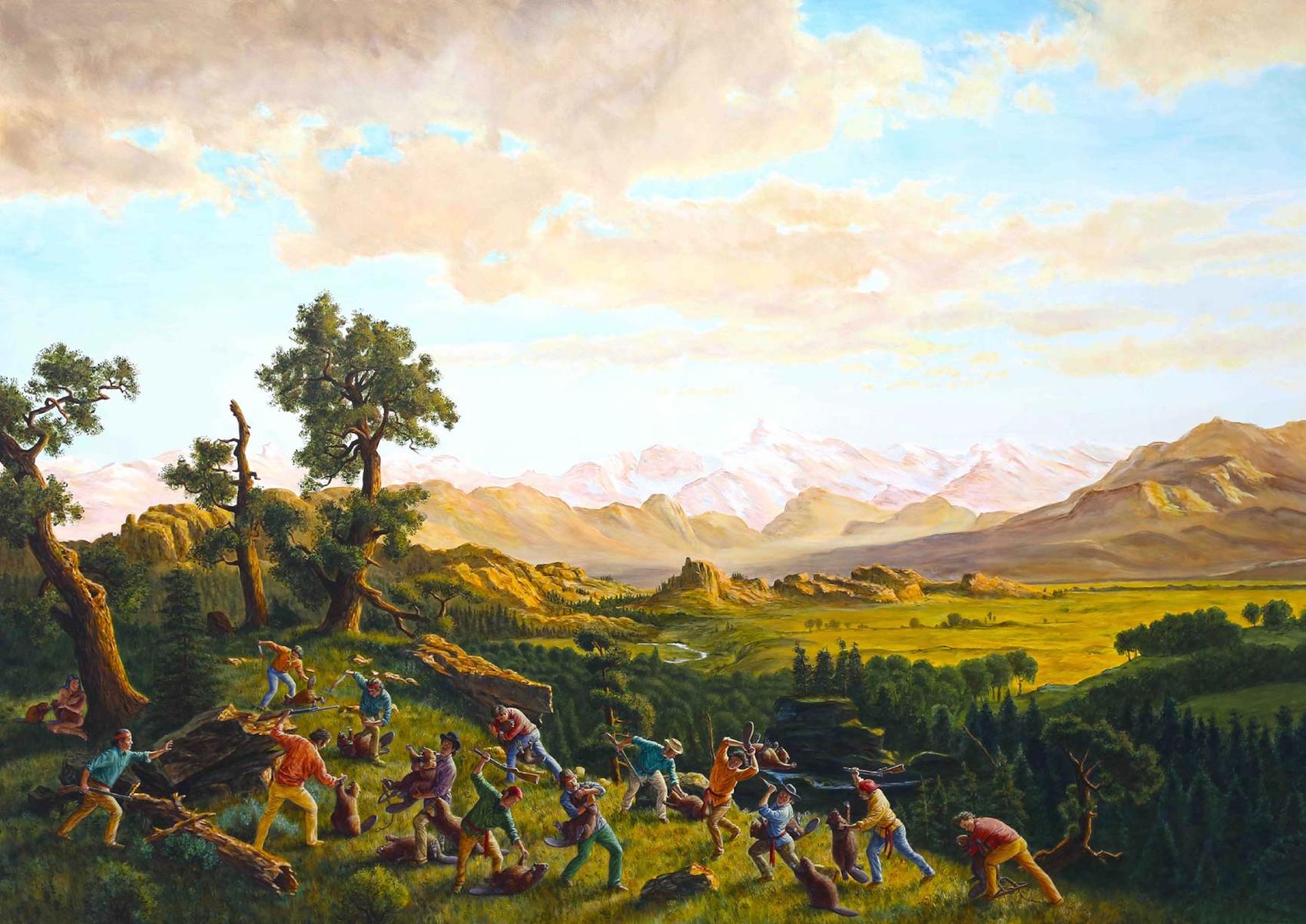How art can help with Indigenous reconciliation
By Carolyn Ali

Kent Monkman is changing the way people look at Canadian history
When Kent Monkman launched his exhibition, Shame and Prejudice: A Story of Resilience, in 2017, he knew that the average Canadian didn’t have a broad understanding of how Indigenous people experienced colonial history. But over the next three years, as the artist met with museum-goers across the country, he realized that the extent of the collective knowledge gap was even greater than he thought.
“The erasure of these colonial policies was so effective that most Canadians are still in the dark.”
Kent Monkman, Artist
“The erasure of these colonial policies was so effective that most Canadians are still in the dark,” he said. “I don’t know how many people throughout the tour told me that they were learning things for the first time … they’ve gone all the way through the education system, graduating from our universities, and had learned virtually nothing about Indigenous experience, including residential schools.”

Now in the final months of its nine-city run, Shame and Prejudice is on view at the Museum of Anthropology (MOA) at UBC. In September, Monkman spoke about his exhibition in an online artist conversation with MOA curator, Dr. Jennifer Kramer.
“I think it’s particularly apt that [Monkman’s] exhibition both opened and will close on a university campus,” said Dr. Kramer. She noted that places of education are critical for raising awareness and promoting action. She added that Monkman began planning his exhibition in 2015, when the Truth and Reconciliation Commission of Canada’s Calls to Action had just been released, urging governments, educational and religious institutions, civil society groups and all Canadians to redress the legacy of residential schools and advance reconciliation.
Shame and Prejudice features nearly 80 pieces, including Monkman’s own paintings, installations and sculptures, in dialogue with historical artifacts loaned from museums and private collections across Canada. A Canadian artist of Cree ancestry, Monkman takes viewers on a journey through the past 150 years of Canada, reclaiming and reinserting Indigenous voices into the collective memory of the country while challenging colonial ideas of its history.


He notes that museums often perpetuate a singular view of history. “So much of the art history told on this continent is told from the settler perspective,” he says. “The art that’s upheld and hung in our colonial institutions effectively is an erased version. It’s a version that omits Indigenous perspective and Indigenous experiences.” With Shame and Prejudice, he set out to “have that direct conversation about these policies that were designed to disappear Indigenous peoples.”

The visual language of art, Monkman believes, can help tell the stories of Indigenous experiences in an accessible way. “It’s really important that museums are challenged and that we move forward and find new conversations to reframe our shared histories.”
Carolyn Ali is a writer for UBC’s Brand and Marketing. This article was published on November 6, 2020.
Feel free to republish the text of this article, but please follow our guidelines for attribution and seek any necessary permissions before doing so. Please note that images are not included in this blanket licence.


